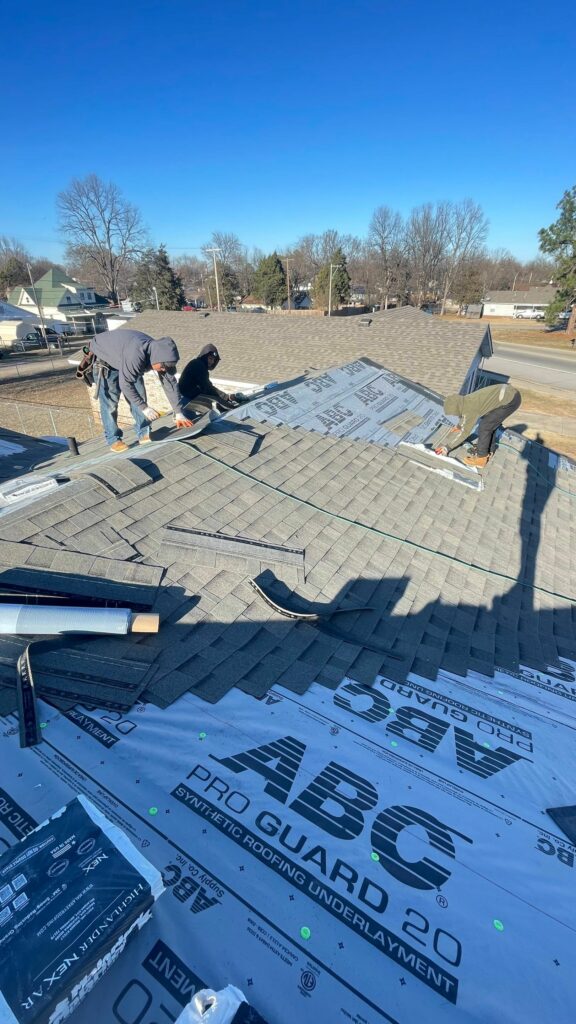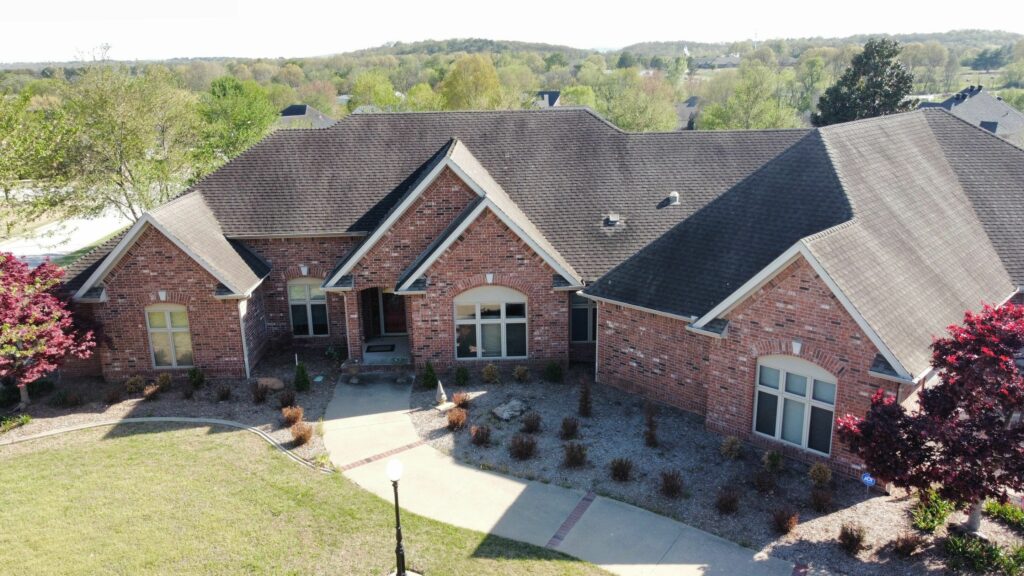Roof Replacement For Seniors

Roof replacement is an essential yet substantial expense that poses a significant challenge for many senior citizens. Given the relatively fixed and often limited income of this demographic, the high cost associated with replacing a roof can be especially daunting.
However, a variety of resources are available to provide financial aid and support to seniors in need of this essential home repair. This discussion will explore the various options available, from government grants to nonprofit assistance programs, that aim to lessen this financial burden and ensure a safe and comfortable living environment for our seniors.
With careful navigation and proper understanding, the seemingly insurmountable challenge of roof replacement can become a manageable task.
Key Takeaways
- There are multiple government programs, grants, and loans available specifically for seniors who need assistance with roof replacement.
- These programs prioritize removing health and safety hazards and improving living conditions for elderly homeowners.
- The maximum assistance amount varies, with some programs offering up to $50,000 in combined grants and loans.
- It is important for seniors to research and identify suitable regional programs and understand the eligibility requirements before applying for assistance.
Understanding Home Repair Loans
 To navigate the financial challenges of roof replacement, seniors may turn to home repair loans, such as those offered by the Section 504 Home Repair program. This program provides loans and grants for home repairs, improvements, and modernizations. It specifically targets elderly homeowners, offering grants to remove health and safety hazards.
To navigate the financial challenges of roof replacement, seniors may turn to home repair loans, such as those offered by the Section 504 Home Repair program. This program provides loans and grants for home repairs, improvements, and modernizations. It specifically targets elderly homeowners, offering grants to remove health and safety hazards.
Understanding home repair loans is essential for senior citizens seeking to alleviate the financial burden of essential home repairs. These loans are designed to be accessible and affordable, with the Section 504 program offering a maximum loan amount of $40,000, termed for 20 years at a fixed interest rate of 1%.
The program’s eligibility requirements include being the homeowner and occupying the house, meeting household income limits, and being aged 62 or older for grants. Applications are accepted year-round through local RD offices, with varying forms and resources by state.
In addition to repair loans, there are also roof repair grants available through government assistance programs, nonprofit organizations, and state offices. These resources offer senior citizens much-needed financial support, ensuring their roofs remain safe and functional.
Eligibility Criteria For Assistance
While understanding home repair loans and grants is critical for seniors, equally important is meeting the eligibility criteria to avail such financial assistance for roof replacement. The program’s primary focus is to assist low-income elderly homeowners who cannot afford the high cost of roof replacement.
Eligibility criteria vary by program, but commonly include:
- The applicant must be a homeowner and occupy the house.
- Household income must not exceed the very low limit set by the county.
- Preference is often given to senior citizens aged 62 or older.
- The applicant must demonstrate the inability to obtain affordable credit elsewhere.
These requirements ensure that the most vulnerable and needy senior citizens can benefit from the financial assistance provided. By meeting these eligibility criteria, low-income elderly homeowners can access necessary funds for roof replacement, ensuring their homes remain safe and secure.
It is advised for seniors to consult with relevant bodies to understand these criteria fully and to seek assistance if necessary. The ultimate goal is to aid seniors in maintaining their homes, offering them a better and more secure future.
Exploring The Safe At Home Program

In the pursuit of enhancing the living conditions and safety of elderly homeowners, the Safe at Home Program offers loans and grants specifically designed
for home repairs and improvements, including roof replacements. This initiative helps seniors with home repairs, enabling them to maintain their houses in good condition.
By exploring the Safe at Home program, seniors can find financial assistance for regular home maintenance tasks that they might struggle with due to age or financial constraints. One of the significant benefits of this program is the possibility of a free roof replacement. The program provides specific grants for elderly homeowners who are unable to afford such crucial replacements elsewhere.
The maximum loan amount under this program is $40,000, with a fixed interest rate of 1%, which can be highly beneficial for seniors with limited income. Furthermore, the grants have a lifetime limit of $10,000.
The program accepts applications year-round, making it an accessible and convenient option to help seniors with home repair needs. By providing necessary resources, the Safe at Home Program plays a pivotal role in ensuring a safer living environment for seniors.
Benefits Of The 504 Home Repair Program
Just as the Safe at Home Program offers valuable financial assistance for seniors, the 504 Home Repair Program also provides substantial support for elderly homeowners needing home repairs and improvements. This initiative is particularly beneficial for seniors requiring roof replacement. The 504 Home Repair Program extends much-needed financial assistance in the form of grants to elderly homeowners with limited income.
The benefits of the 504 Home Repair Program for seniors are multi-fold:
- It provides financial aid for essential home repairs and safety improvements, including roof replacement.
- It emphasizes removing health and safety hazards from homes, ensuring seniors live in safer environments.
- It offers a combination of loans and grants, allowing for the receipt of up to $50,000 in assistance.
- The program accepts applications year-round, providing continuous support for seniors in need.
Energy Assistance And Weatherization
 Seniors seeking financial assistance for home repairs and improvements, including roof replacements, can benefit from Energy Assistance and Weatherization programs. These programs, funded by the Department of Energy, aim to alleviate financial burdens and enhance the safety and comfort of seniors’ homes.
Seniors seeking financial assistance for home repairs and improvements, including roof replacements, can benefit from Energy Assistance and Weatherization programs. These programs, funded by the Department of Energy, aim to alleviate financial burdens and enhance the safety and comfort of seniors’ homes.
The Weatherization Assistance Program (WAP) helps to increase energy efficiency by implementing energy-saving measures. This can include roof repairs or replacement, attic or roof insulation, and other modifications that make homes safer and more energy-efficient. The Home Energy Assistance Program (HEAP) provides financial help to seniors who have difficulty meeting their home energy costs.
These programs seek to help those seniors who cannot obtain affordable credit elsewhere. The financial assistance provided ranges from loans to grants, with a maximum loan amount of $40,000 and a maximum grant amount of $10,000. In some cases, loans and grants can be combined for up to $50,000 in assistance.
Applications for these programs can be made through local RD offices, with specific forms and resources varying by state. Approval times depend on funding availability. These programs offer significant support to seniors, allowing them to maintain safe and energy-efficient homes.
Identifying Suitable Regional Programs
While navigating the financial landscape of roof replacement can be daunting for seniors, identifying suitable regional programs can provide targeted aid and alleviate some of the burden. These programs are designed to assist low-income homeowners, particularly seniors, in maintaining their homes and ensuring their safety.
The process of identifying suitable regional programs involves researching and understanding the eligibility requirements, the nature of the assistance provided, and the application process. It is essential to understand that these programs may vary by region and have specific criteria that must be met.
Here are four key steps to identifying suitable regional programs:
- Researching local, state, and federal home improvement programs.
- Consulting with local non-profit organizations that help seniors with home repairs.
- Understanding the eligibility requirements, such as age, income level, and homeowner status.
- Applying for the programs that best meet your needs and circumstances.
Through these steps, seniors can find the assistance they need for roof replacement. It’s important to remember that help is available, and no senior should have to live under a roof that threatens their safety or comfort.
Navigating The HUD Home Repair Grants
In the labyrinth of financial aid for home repairs, the HUD Home Repair Grants, also known as the Section 504 Home Repair program, stand as a valuable resource for seniors seeking to replace or repair their roofs. This government grants program offers financial aid for home repairs and improvements, specifically for single-family housing, with an emphasis on roof replacement for seniors.
| Program | Maximum Assistance | Purpose |
|---|---|---|
| HUD Home Repair | $50,000 (combined) | Home repairs and improvements |
| Section 504 | $40,000 (loan), $10,000 (grant) | Remove health and safety hazards |
| Other Government Grants | Varies | Specific home repair projects |
The eligibility criteria include homeownership, occupancy, and age (62 or older for grants). The aim is to remove health and safety hazards, improve living conditions, and help families stay in their homes. Applications are through local RD offices, with approval times dependent on funding availability. Consulting a USDA home loan specialist is advisable due to variations in forms and resources by state. The HUD Home Repair Grants are a crucial tool for seniors navigating the financial landscape of roof replacement.
Accessibility Improvements For Handicapped
Navigating the landscape of home repairs and improvements can be particularly challenging for individuals with disabilities; fortunately, the Accessibility Improvements for Handicapped program provides crucial financial support to help overcome these obstacles. This program aids seniors and people with disabilities in making necessary modifications to their homes, reducing the risk of safety hazards.
The program’s funding can be applied to a variety of essential home improvements:
- Installing grab bars in bathrooms to prevent falls.
- Widening doorways for wheelchair access.
- Building ramps for easier entry and exit from the home.
- Modifying bathrooms to improve accessibility and safety.
These accessibility improvements for handicapped individuals not only enhance the quality of life but also foster independence. The goal is to transform their living environments into safer, more accessible spaces.
Eligibility for this program is based on income requirements and the necessity for such improvements. The end result is a home that caters to the unique needs of seniors and individuals with disabilities, ensuring they can live safely and comfortably in their own homes.
It is indeed a commendable initiative towards inclusivity and better living conditions.
To Finish
In conclusion, numerous programs exist to financially assist low-income seniors in making essential home repairs such as roof replacements. These resources, ranging from government initiatives to non-profit organizations, aim to provide secure and comfortable living environments for seniors.
By understanding eligibility requirements and exploring various regional and national programs, seniors can successfully navigate the often daunting task of roof replacement, ensuring a safe and functional home.
Michael Overzat
Michael Overzat resides in Fort Smith, Arkansas with his wife and three kids. He enjoys to hike, skateboard, write, and get involved in charity organizations. He was originally born in Maryland. He has worked within the roofing industry for 5 years and is very active within the industry by attending conferences, masterminds, etc. His vision is to create a multi-state organization that has a customer centric model. He's worked for some of the biggest names in the industry and hopes to create a more people focused model for the roof replacement process.
